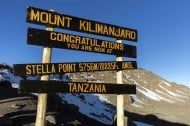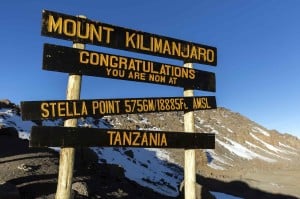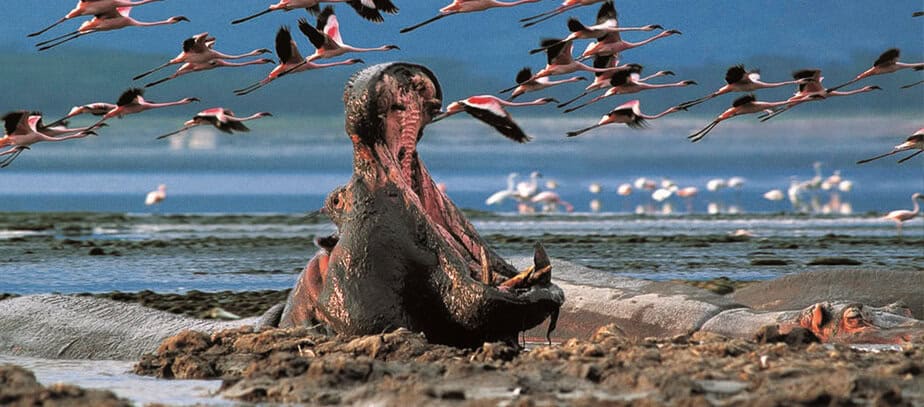
How to Avoid Altitude Sickness When Climbing Mount Kenya or Kilimanjaro
Are you considering climbing Mount Kenya or Kilimanjaro?
You don’t want to ruin your climbing experience because you got altitude sickness, also known as acute mountain sickness (AMS).
Even healthy and experienced climbers can experience altitude sickness when they climb heights of over 8,000 ft. Mount Kenya reaches over 17,000 ft, while Mount Kilimanjaro is over 19,000 ft.
This is because of the pressure on your body due to the low levels of oxygen in the atmosphere. Symptoms include everything from fatigue and vomiting to increased heart rate and light-headedness.
But there are ways you can prevent altitude sickness. Keep reading to find out how you can avoid altitude sickness by following our tips.
1. Drink Lots of Fluids
As you ascend higher up the mountain, the rate of water vapor sent to your lungs falls. This could cause your body to dehydrate. This can only further worsen your altitude sickness.
Therefore, you need to make sure you drink plenty of fluids. In particular, you need to be drinking water.
You need to be drinking around 3 liters of water per day when you’re hiking up either Mount Kenya or Kilimanjaro. You need to make sure you’re carrying plenty of water on your journey.
However, you need to avoid alcohol and caffeine since they can increase your dehydration rather than ease it.
2. Plan Your Route
There are few things more dangerous that spontaneously deciding to climb a mountain over 15,000 ft.
You need to make sure you carefully plan your route to the summit. There are many routes to consider depending on a number of factors from your ability to the time available.
You need to establish how many kilometers you’re going to climb per day. Remember the high altitude means you won’t be able to climb at the rate you’re familiar with.
After you’ve reached 10,000 ft, you should avoid climbing over 1,000 ft per day. If you’re climbing more than this per day, you should include rest days in between your climbing days.
Allow for a flexible itinerary which allows you to include an extra day of climbing or resting. You never know if you have to allow the weather the improve or aches and pains to ease.

3. Take Your Time
You shouldn’t hike at the rate you’re used to. By walking slowly, you’ll be able to avoid altitude sickness effectively.
Sometimes, you may want to include acclimatization days. This is a rest day in which you allow your body to adjust to the level of oxygen.
If you start to develop altitude sickness, by slowing down and resting some days, you may be able to overcome the symptoms.
You shouldn’t be sleeping higher than 1,000 ft higher than you did the previous night. This provides your body with the time required to adjust.
4. Eat Well
You’re going to need your energy when climbing Mount Kenya or Kilimanjaro. That’s why it’s important to make sure you have a high-calorie diet in preparing for your hike.
You’re probably used to being told to reduce your intake of carbohydrates. However, you need to increase your consumption of pasta, potatoes, rice, and other carbs, if you’re going to avoid altitude sickness.
5. Get Physically Fit
If you’re embarking on climbing to the top of one of the top two mountains in Africa, you’re going to need to be physically fit.
You should probably also get used to the experience of hiking at a high altitude. This way your body acclimatizes better to the atmosphere when you’re over 10,000 ft.
If you have any medical conditions, such as high blood pressure or heart problems, it’s important to consult your doctor before planning your trip.
You have to be peak physical condition to successfully venture to the top of two biggest mountains on the continent.
7. Diamox Medication Tablets
You may consider taking Diamox medication tablets before you embark on your trip to the summit.
You can take the tablets around 2 days prior before the climb to prevent altitude sickness. After this, you need to continue taking the tablets twice per day to get the benefits.
However, you’ll probably need to prescription from your doctor to get your hands on the medication tablets.
Furthermore, don’t think Diamox tablets are a simple cure for altitude sickness. If you don’t follow the rest of the tips on this list, you may not avoid getting sick.
If you’re allergic to sulfa drugs, you may need to get in touch with your doctor to discuss an alternative altitude sickness treatment. For example, a dexamethasone medicine is a popular option for those unable to take Diamox tablets.
8. Get Sun Protection
The power of the sun on your journey to the top of Mount Kenya and Kilimanjaro can be extremely dangerous. You need to make sure you protect yourself against sunburn and sunstroke.
You’ll need to purchase a high factor sun cream. Plus, make sure you have high-quality sunglasses to avoid the glare of the sunlight. During periods of extreme sunlight, take a rest in the shade somewhere.
If you get altitude sickness, this could be significantly worse if you’re also suffering from sunstroke.
How to Prevent Altitude Sickness?
If you’ve never climbed over 8,000 ft before, you won’t know how your body will react to high altitudes. Even though anyone can experience altitude sickness, people have different symptoms.
If you want to prevent altitude sickness, you need to take your time making your way to the summit of the mountains. By following our tips for avoiding altitude sickness, you can ensure you get to the top safely.
To find out more about how you prepare for your trip to Africa, get in touch with us today!


